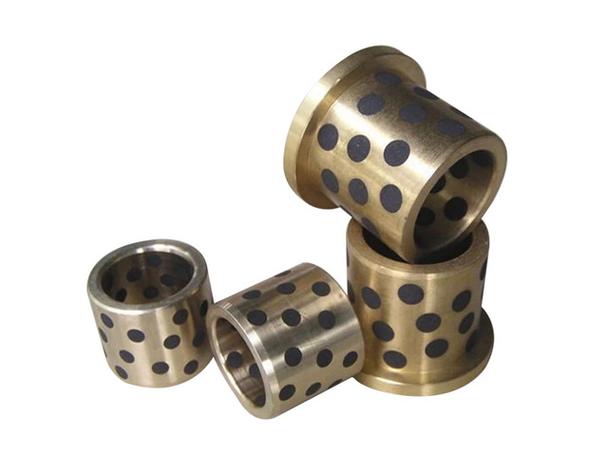Precision Bearings and Bushings: A Comprehensive Guide to Types, Maintenance, and Applications
Precision bearings and bushings are critical components in industrial machinery, designed to reduce friction and support rotational or linear movement with exceptional accuracy. These components ensure smooth operation in applications ranging from aerospace systems to automotive manufacturing, delivering reliability under high-speed and heavy-load conditions.
1、types of precision bearings2、how to maintain precision bushings
3、precision bearings vs standard bearings
4、applications of industrial bushings
5、choosing the right precision bearing
1、types of precision bearings

Precision bearings come in various designs to meet specific operational demands. Ball bearings, known for their low friction and high-speed capabilities, are ideal for applications like electric motors and robotics. Roller bearings, including cylindrical and tapered variants, handle heavier radial loads in industrial gearboxes. Angular contact bearings manage combined radial and axial loads in machine tool spindles, while slewing bearings support rotational movement in cranes and excavators. Ceramic hybrid bearings offer superior thermal resistance for aerospace applications. Each type undergoes rigorous manufacturing processes to ensure micron-level tolerances, directly impacting machinery performance and longevity.
2、how to maintain precision bushings
Proper maintenance of precision bushings significantly extends service life. Start by implementing regular lubrication schedules using manufacturer-recommended greases. Conduct monthly inspections for wear patterns or deformation using precision measuring tools. Avoid contamination by sealing housing units and replacing worn seals promptly. For polymer bushings, monitor temperature thresholds to prevent material degradation. Implement vibration analysis systems to detect early signs of misalignment. When replacing bushings, ensure proper press-fit installation using hydraulic tools to avoid deformation. Adhering to OEM maintenance intervals reduces downtime and prevents catastrophic machinery failure in high-precision systems.
3、precision bearings vs standard bearings
Precision bearings differ fundamentally from standard bearings in tolerance levels and manufacturing processes. While standard bearings typically have ABEC 1 tolerances (±0.0075mm), precision bearings achieve ABEC 7 or higher (±0.0025mm). This tight tolerance reduces vibration by 60-80% in high-speed applications. Material selection also varies, with precision versions using vacuum-degassed steel or ceramic hybrids for enhanced durability. Surface finish quality on precision bearing races exceeds 0.1μm Ra compared to 0.4μm in standard bearings. These enhancements justify their 3-5x higher cost in applications requiring extreme accuracy, such as medical imaging equipment or semiconductor manufacturing tools.
4、applications of industrial bushings
Industrial bushings serve critical functions across multiple sectors. In automotive manufacturing, bronze-oil-impregnated bushings dampen vibrations in suspension systems. Hydraulic cylinders rely on composite bushings to handle extreme pressure fluctuations. Food processing equipment uses FDA-compliant polymer bushings for corrosion resistance. Wind turbine pitch control systems employ self-lubricating bushings that withstand outdoor environmental stresses. Recent advancements include smart bushings with embedded sensors that monitor load and wear in real-time for predictive maintenance. Case studies show properly specified bushings reduce energy consumption by up to 15% in heavy machinery through optimized friction management.
5、choosing the right precision bearing
Selecting optimal precision bearings requires analyzing six key parameters: load capacity (dynamic and static), speed rating (DN value), operating temperature range, lubrication requirements, material compatibility, and certification standards. For CNC machines, prioritize bearings with P4 or P2 accuracy classes. High-vacuum environments demand stainless steel bearings with special lubricants. Calculate the L10 bearing life using ISO 281 formulas to predict maintenance intervals. Consult technical datasheets for exact preload requirements and mounting configurations. Partnering with certified bearing manufacturers ensures access to application engineering support and custom solutions for unique operational challenges.
Understanding precision bearings and bushings unlocks machinery optimization potential across industries. Whether you're troubleshooting bearing failures in production lines or specifying components for new automation systems, this guide's insights into types, maintenance comparisons, and selection criteria provide actionable knowledge. The following sections delve deeper into material innovations and installation best practices that directly impact equipment ROI.
In conclusion, precision bearings and bushings form the backbone of modern mechanical systems. By selecting appropriate types, implementing rigorous maintenance protocols, and understanding their operational limits, engineers can dramatically improve machinery efficiency and reduce lifecycle costs. Continuous advancements in materials science and smart bearing technologies promise even greater performance breakthroughs in industrial applications.




 13869596835
13869596835